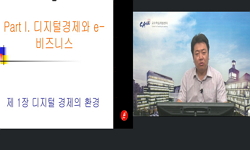Substantial progress has been made towards understanding the folding mechanisms of proteins in virto and in vivo even though the general rules governing such folding events remain unknown. This paper reviews current folding models along with experimen...
http://chineseinput.net/에서 pinyin(병음)방식으로 중국어를 변환할 수 있습니다.
변환된 중국어를 복사하여 사용하시면 됩니다.
- 中文 을 입력하시려면 zhongwen을 입력하시고 space를누르시면됩니다.
- 北京 을 입력하시려면 beijing을 입력하시고 space를 누르시면 됩니다.
https://www.riss.kr/link?id=A100966989
-
저자
Shin, Hang-Cheol (Department of Bioinformatics and Life Science, Soongsil University, Bioproducts Research Center, Yonsei University)
- 발행기관
- 학술지명
- 권호사항
-
발행연도
2001
-
작성언어
English
- 주제어
-
등재정보
SCIE,SCOPUS,KCI등재
-
자료형태
학술저널
-
수록면
237-243(7쪽)
- 제공처
- 소장기관
-
0
상세조회 -
0
다운로드
부가정보
다국어 초록 (Multilingual Abstract)
Substantial progress has been made towards understanding the folding mechanisms of proteins in virto and in vivo even though the general rules governing such folding events remain unknown. This paper reviews current folding models along with experimental approaches used to elucidate the folding pathways. Protein misfolding is discussed in relation to disease states, such as amyloidosis, and the recent findings on the mechanism of converting normally soluble proteins into amyloid fibrils through the formation of intermediates provide an insight into understanding the pathogenesis of amyloid formation and possible cules for the development of therapeutic treatments. Finally, some commonly adopted refolding strategies developed over the part decade are summarized.
동일학술지(권/호) 다른 논문
-
What Can Caenorhabditis elegans Tell Us About Nematiocides and Parasites\ulcorner
- The Korean Society for Biotechnology and Bioengineering
- Dent, Joseph A.
- 2001
- SCIE,SCOPUS,KCI등재
-
Phenotype of Hepartocyte Spheroids in Synthetic Thermo-reversible Extracellular Matrix
- The Korean Society for Biotechnology and Bioengineering
- Park, Keun--Hong
- 2001
- SCIE,SCOPUS,KCI등재
-
- The Korean Society for Biotechnology and Bioengineering
- Lee, Haeshin
- 2001
- SCIE,SCOPUS,KCI등재
-
- The Korean Society for Biotechnology and Bioengineering
- Yuk, Soon-Hon
- 2001
- SCIE,SCOPUS,KCI등재







 ScienceON
ScienceON







